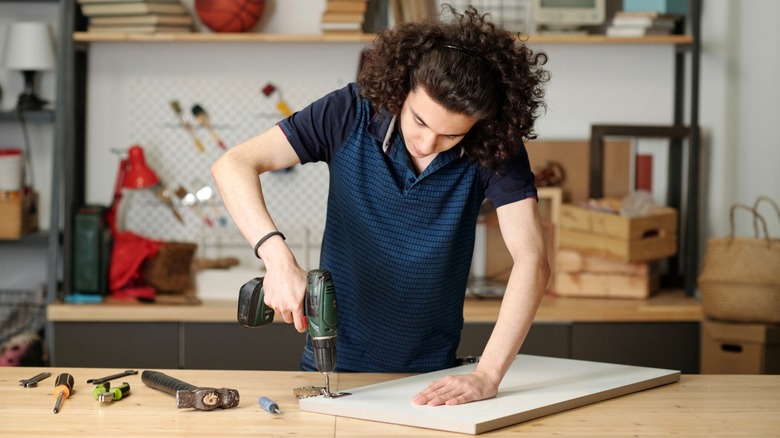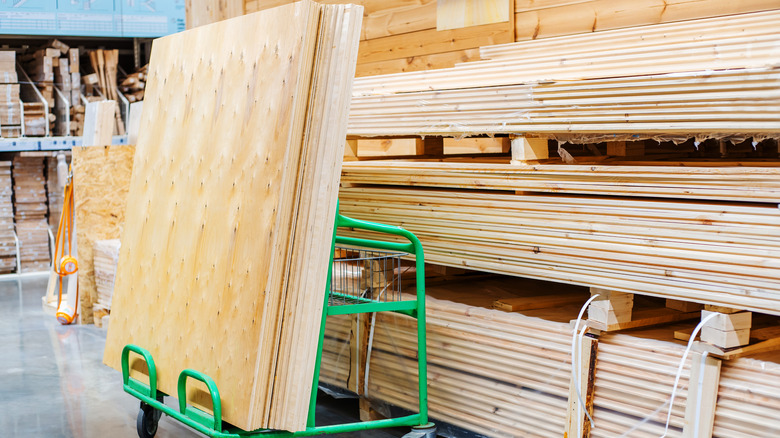How To Make Sure You're Buying Cabinet Grade Plywood
When planning a DIY cabinet project — because yes, you can build your own cabinets — you can't underestimate the importance of quality materials. A functional build can be a daunting task, which is why focusing on getting the most appropriate plywood, fasteners, and tools will make the journey simpler and the end result more satisfying. Part of that involves checking the specs when picking your plywood. The other is simply ensuring it passes the eye test.
Since you'll often see both sides of cabinet plywood, two-faced (or two-sided) varieties are the ideal ones to buy for cabinets. With these, both sides are sanded and prepped for visual exposure. Check the surfaces for dings, cracks, and other defects, and check the shape to ensure there isn't any warping. Usually, the secret to choosing the right type of plywood for your cabinet project centers around the quality rating.
Plywood ratings range from A to D for the face. An "A" grade represents the highest quality. Meanwhile, the back's rating system is numeric, with 1 being the best. An A1 piece of plywood is free of knots and imperfections on either side — an ideal rating for cabinet plywood. For cost savings, you can also step down to "B" grade plywood. Although it has more defects, "B" grades have a sanded surface and a generally quality appearance that can work in some cabinet applications. After assessing the quality, consider the wood style and thickness to ensure you're getting the best plywood for your cabinet project and your pocketbook.
Choosing the right plywood variety
Plywoods come in varying thicknesses, with a higher number of plies being preferable for strong, stable cabinet panels. Generally, you'll want, at a minimum, 5-ply plywood for your cabinets. For cabinet frames, a ¾-inch thickness is preferable for strength and durability. If you can get thick boards consisting of numerous thin plies, you'll have a sturdy piece of cabinet-grade plywood that will resist cracking and wood movement. For the cabinet backing, drawer bottoms, and other components that bear less weight, you can go as thin as ¼-inch panels.
Cabinet-grade wood varieties are usually hardwoods like birch, maple, and oak. You can sometimes use sanded softwood plywoods, such as pine, but with their inferior durability and aesthetics, these aren't the best wood options for high-traffic cabinets. Consider how you want to finish your cabinets as you compare different wood types, as some materials, like oak, accept stain more easily.
Another important consideration is moisture resistance. Plywoods can vary significantly in this regard, with some being easily damaged by excessive moisture. Meanwhile, options like BWP or, even better, marine plywood can withstand exposure to a much greater degree without warping or degrading. They're ideal for high-moisture environments like bathrooms or kitchens. It's worth reaching out to a hardwood supplier to make sure you're buying cabinet-grade plywood appropriate for your project. You can likely find great lumber deals at Lowe's or Home Depot, but for pricing, advice, and breadth of options, a supplier is the place to shop first.

